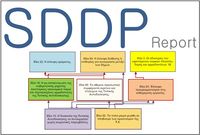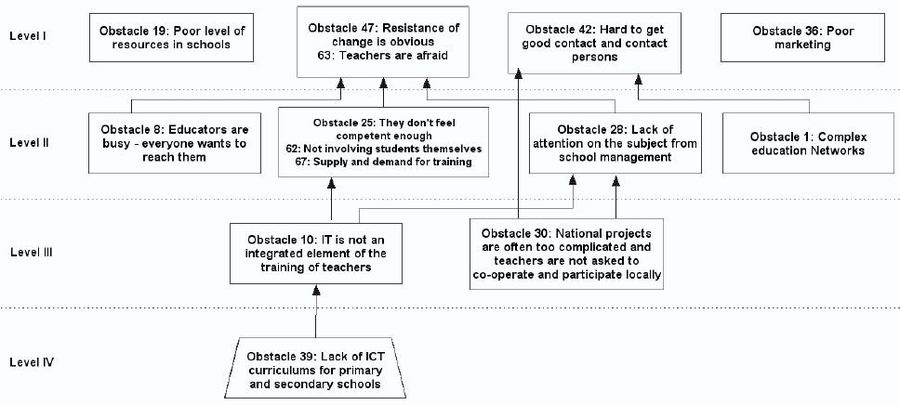Insafe SDDP: Engaging Educators - Defining the Problématique
|
Executive Summary
For the first time ever, all Awareness Nodes of the EU Safer Internet project used the Structured Design Dialogue Process (SDDP) during their Insafe Training meeting which took place in Limassol, Cyprus September 17-19, 2007.
The two SDDP co-laboratories ‘Engaging Educators’ documented here built on experiences gained from previous relevant training sessions in Bruges and Stockholm as well as the results of the 6-month evaluations (Customer Satisfaction Surveys) performed by the coordinating node.
Two simultaneous running co-laboratories were dealing with the topic of engaging educators. Co-laboratory A explored the weaknesses of the current model of collaboration between nodes and educators, while co-laboratory B envisioned not only ideal means of engaging educators in the Internet Awareness Campaign but also envisioned the ideal collaboration model between nodes and educators.
On the 19th of September 2007, half of the staff of the European network of Safer Internet Nodes engaged at St. Raphael Hotel, Limassol, Cyprus, for four hours in a structured dialogue focusing on the triggering question:
What are obstacles that prevent us from engaging educators?
In response to the TQ, the 20 participants came up with 70 obstacles. The voting results were used to select factors for the subsequent structuring phase to identify inter-relations among the generated obstacles. Participants structured 14 obstacles. The following Figure ‘Educators – Problématique – Root Cause Map’ shows the resulting influence tree map. 14 factors were structured within four layers/levels.
The voting results were used to select factors for the subsequent structuring phase to identify inter-relations among the generated factors. The 14 factors were structured within four levels and are related according to the influence they exert on each other.
Those factors that appear lower in the Root Cause Map, hence are positioned at the root of the tree.
According to the participants of this workshop, the obstacle appear to be the most influential was:
Obstacle #39: Lack of ICT curriculums for primary and secondary
After having participated in the structured dialogue it was expected that:
- Participants would gain a deeper understanding of the complexity of the situation and the interconnections between “ideas”;
- Participants would have the opportunity to understand how the “others” may think or perceive the current situation or envision the “ideal” situation;
- A “voted” consensus between all participants taking part in the co-laboratory would emerge in the “influence tree” as a joint product.
The Facilitation Team of these ‘Engaging Educators’ co-laboratories consisted of: Ilke Dagli, Dr. Yiannis Laouris, Tonia Loizidou, Elia Petridou, Tatjana Taraszow, and Kerstin Wittig.
Participants
| Name | Country |
|---|---|
| Daniela Agius | Malta |
| Peter Behrens | Belgium |
| Susanne Boe | Denmark |
| Marjolijn Bonthuis | Netherlands |
| Rita Astridsdotter Brudalen | Norway |
| Claudia Ceccarelli | Italy |
| Anna-Maria Drousiotou | Cyprus |
| Marjolijn Durinck | Netherlands |
| Lena Fagerström | Sweden |
| Maria Kristin Gylfadottir | Iceland |
| Gry Hasselbalch | Denmark |
| Ronald Hechenberger | Austria |
| Karl Hopwood | UK |
| Gudberg Jonsson | Iceland |
| Bernhard Jungwirth | Austria |
| Liene Kalna | Latvia |
| Riitta Kauppinen | Finland |
| Stephanie Kutscher | Germany |
| Karin Larsson | Sweden |
| Stian Lindbol | Norway |

